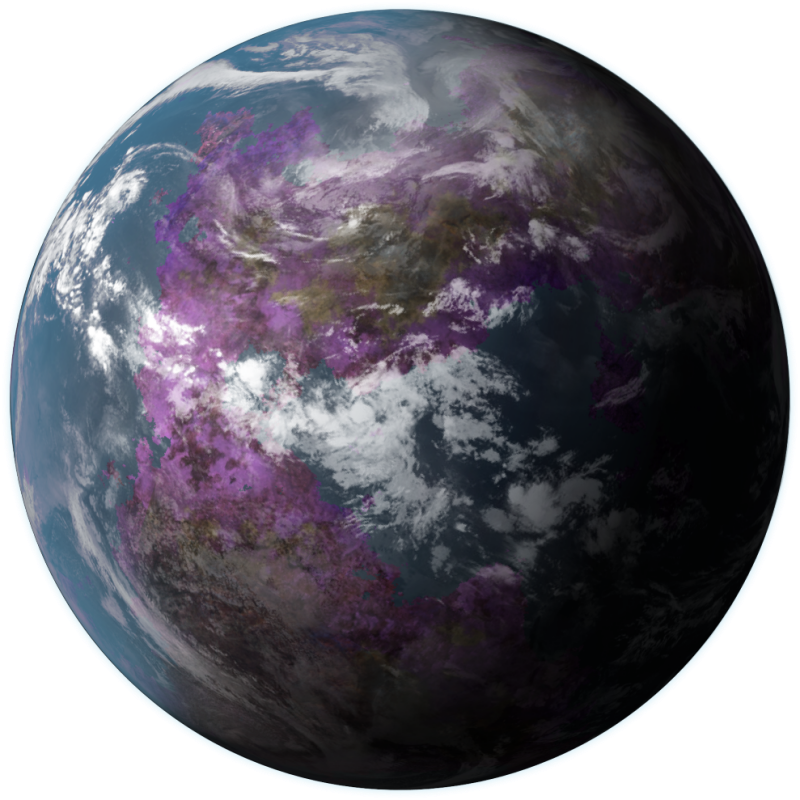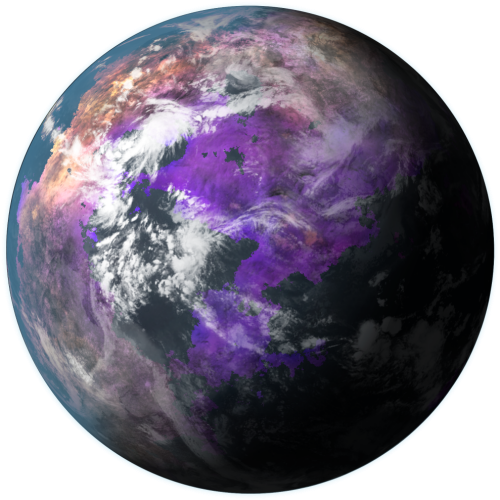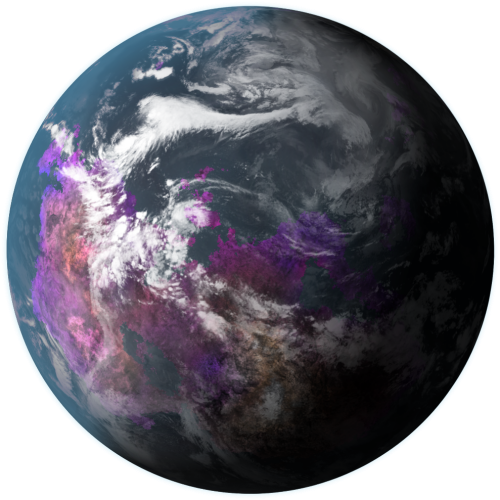On most planets, the indigenous vegetation uses
chlorophyll–based photosynthesis for energy, and the end
result is a familiar-looking world with blue oceans and wide
swaths of green forest. However, terrestrial planets in orbit
of a red dwarf star do not receive enough light for
chlorophyll-based photosynthesis to take place; instead, the
vegetation must use retinal-based photosynthesis. The end
result is a world covered in purple vegetation.
Color scheme aside, a Class M planet in orbit of a red dwarf
star is operationally identical to a Class M planet in orbit of
any other star. As such, any terrestrial planet in a red dwarf
star system would retain its primary classification—a Class M
planet is still Class M—but with retinal subclass applied as a
secondary classification. A Class M planet would therefore
be identified as Class M1.
chlorophyll–based photosynthesis for energy, and the end
result is a familiar-looking world with blue oceans and wide
swaths of green forest. However, terrestrial planets in orbit
of a red dwarf star do not receive enough light for
chlorophyll-based photosynthesis to take place; instead, the
vegetation must use retinal-based photosynthesis. The end
result is a world covered in purple vegetation.
Color scheme aside, a Class M planet in orbit of a red dwarf
star is operationally identical to a Class M planet in orbit of
any other star. As such, any terrestrial planet in a red dwarf
star system would retain its primary classification—a Class M
planet is still Class M—but with retinal subclass applied as a
secondary classification. A Class M planet would therefore
be identified as Class M1.
| ASSIGNED TO MAIN CLASSES |
Class H: Desert, Class L: Marginal, Class M: Terrestrial,
Class O: Pelagic, Class P: Glaciated
Class O: Pelagic, Class P: Glaciated



